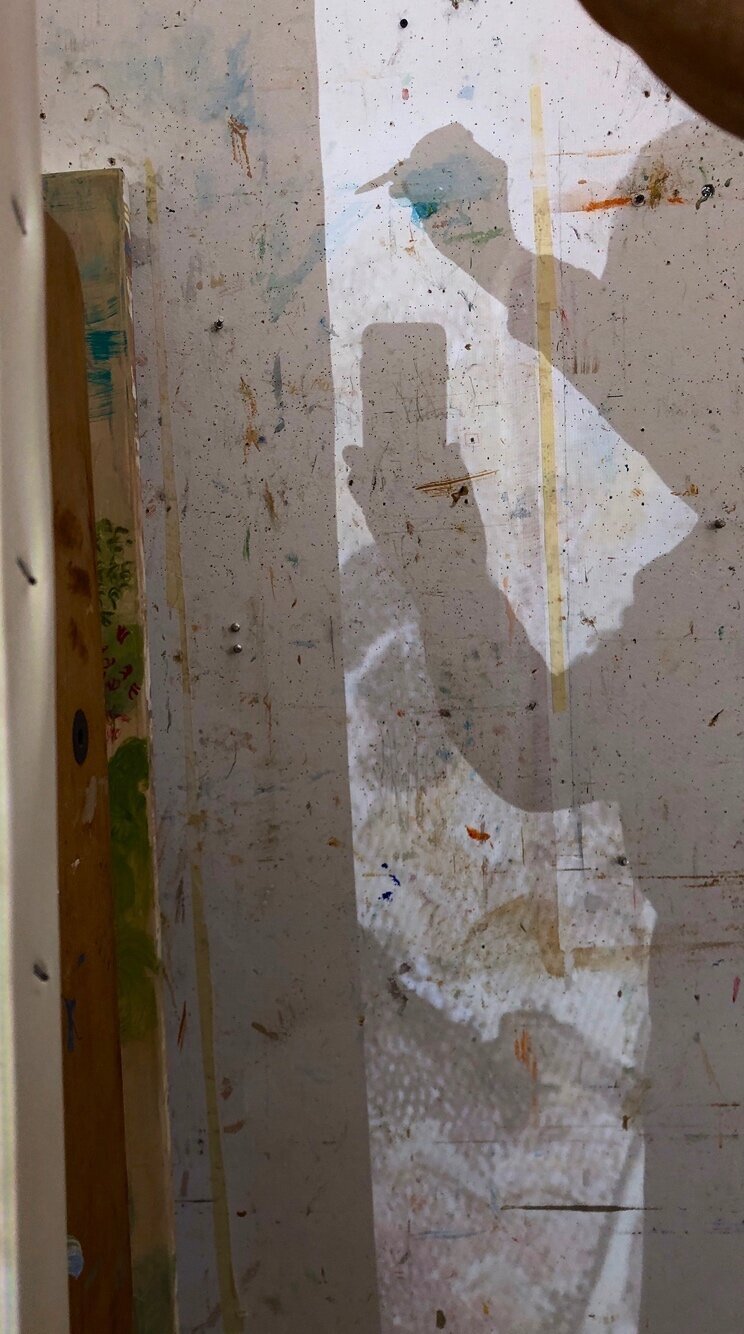8:47 pm update: not so sure about this; it's starting to take my attention away from what matters: the integrity of the painting, it's space; it's composition............ may put a shirt on tomorrow.
2:48 pm update: this is stage 1. i'm stopping for the day; we have a 4 pm meeting & i need to go over to the house & help mikela prepare. i'll start working on her this again tomorrow morning.
10 am update: the drawing is now completed and i'm in the process of transferring it to the canvas. in the mean time, i'm thinking of making a few mid-size versions of the parade series before jumping to the 6x6 ft. size, to see what the scale will do to the brush strokes.
if you click on the image & make it full screen, you can't help but notice that, in the figure of the half hidden woman on the right, nipples have been drawn in. obviously, they weren't there in the photo. a bare breasted christmas shopper next to a young boy with a baby carriage? the surrealists wouldn't have given it a second thought. nor would manet. will this appear in the final painting? stay tuned.
BELOW: manet's Le déjeuner sur l'herbe here is the commentary on this painting from the musee d'orsay web site:
Rejected by the jury of the 1863 Salon, Manet exhibited Le déjeuner sur l’herbe under the title Le Bain at the Salon des Refusés (initiated the same year by Napoléon III) where it became the principal attraction, generating both laughter and scandal.
Yet in Le déjeuner sur l'herbe, Manet was paying tribute to Europe's artistic heritage, borrowing his subject from the Concert champêtre – a painting by Titian attributed at the time to Giorgione (Louvre) – and taking his inspiration for the composition of the central group from the Marcantonio Raimondi engraving after Raphael's Judgement of Paris.But the classical references were counterbalanced by Manet's boldness. The presence of a nude woman among clothed men is justified neither by mythological nor allegorical precedents. This, and the contemporary dress, rendered the strange and almost unreal scene obscene in the eyes of the public of the day. Manet himself jokingly nicknamed his painting "la partie carrée".
In those days, Manet's style and treatment were considered as shocking as the subject itself. He made no transition between the light and dark elements of the picture, abandoning the usual subtle gradations in favour of brutal contrasts, thereby drawing reproaches for his "mania for seeing in blocks". And the characters seem to fit uncomfortably in the sketchy background of woods from which Manet has deliberately excluded both depth and perspective. Le déjeuner sur l'herbe - testimony to Manet's refusal to conform to convention and his initiation of a new freedom from traditional subjects and modes of representation - can perhaps be considered as the departure point for Modern Art.
BELOW: views from our house just before sunrise this morning






